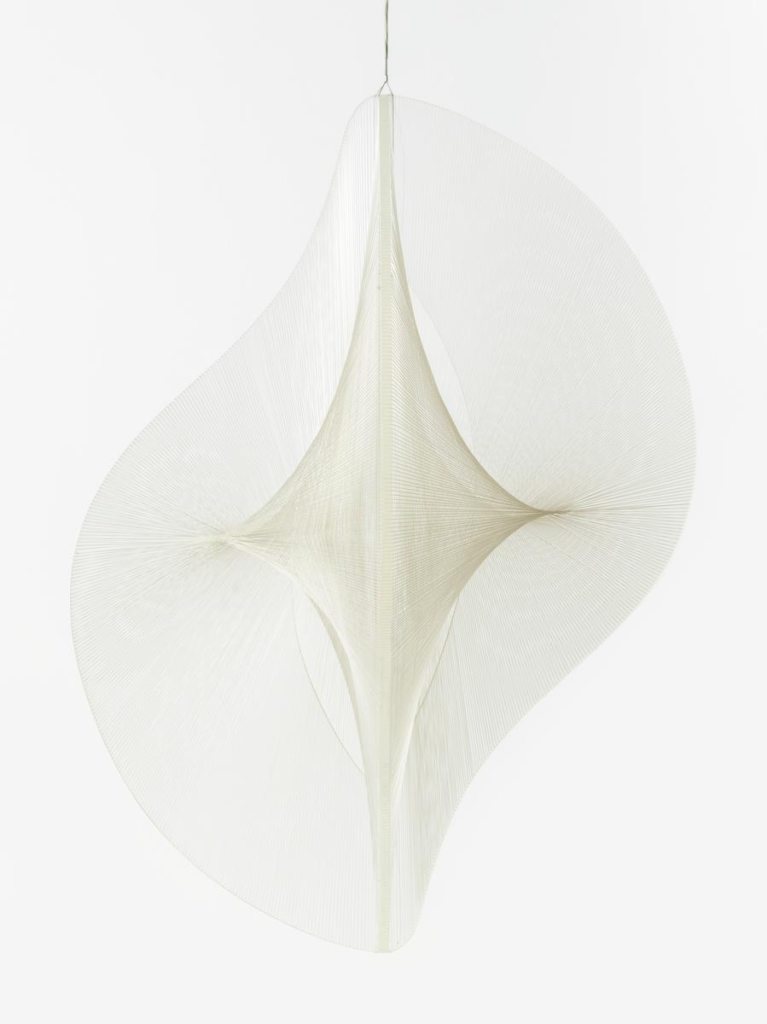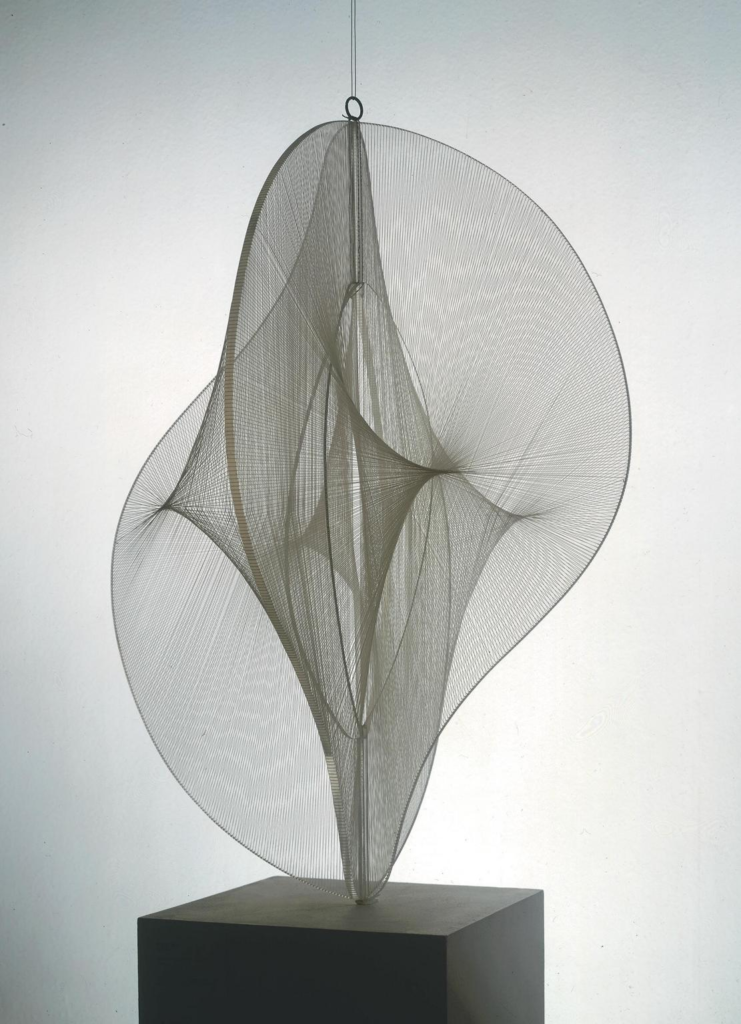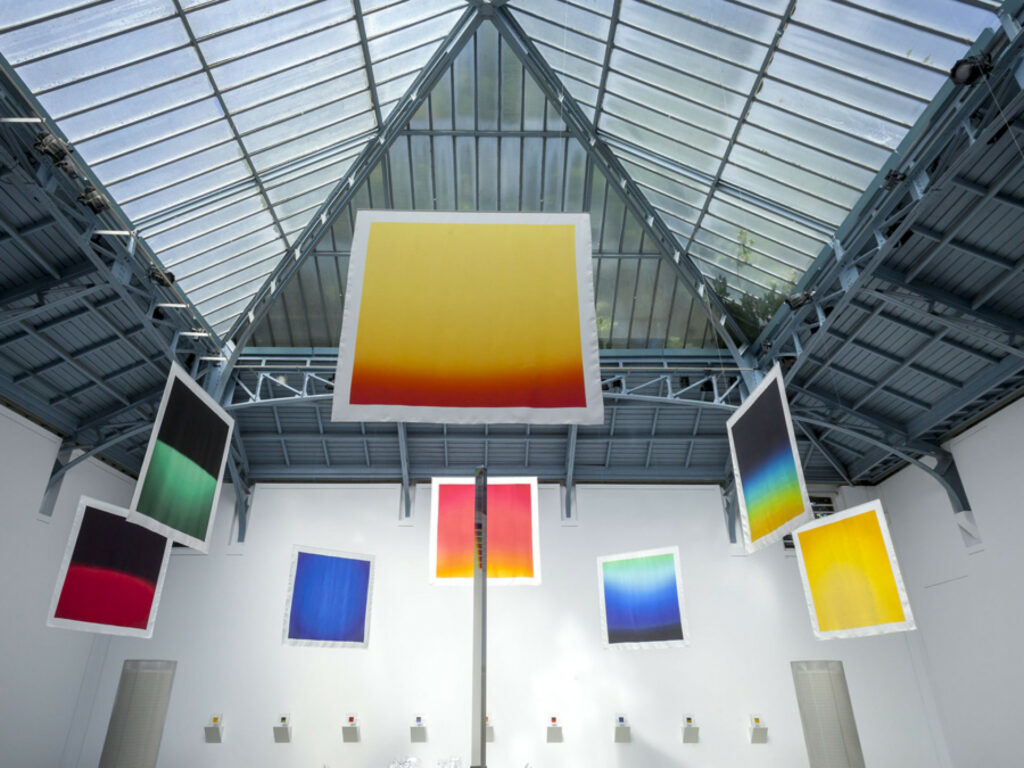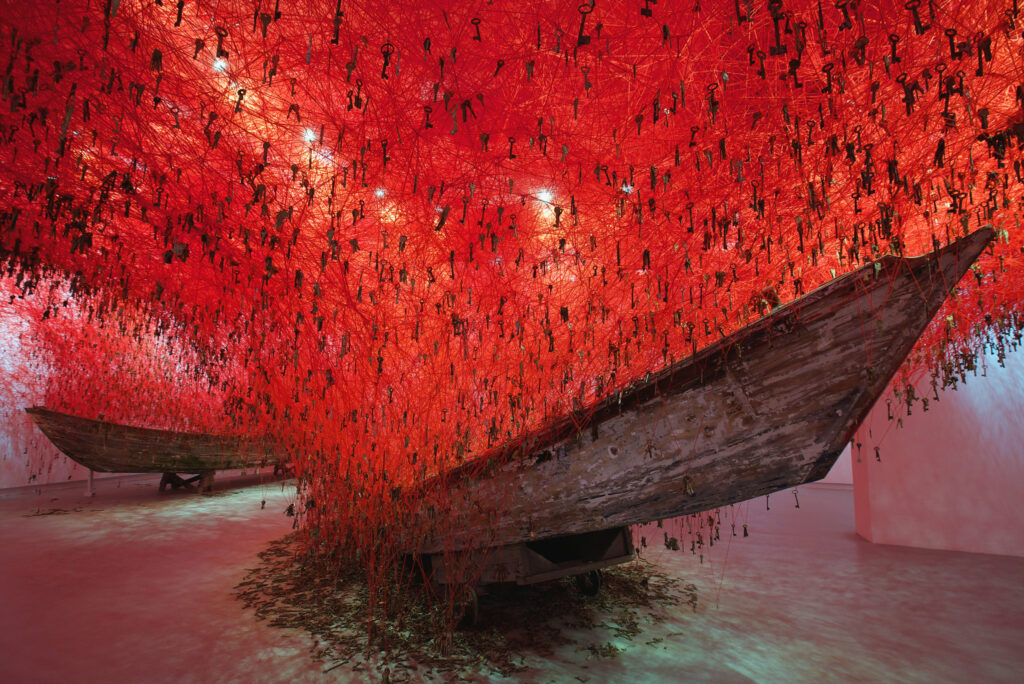
Research on Suspended Installation
One of the first hanging sculptures found in history amongst Nordic, Germanic and Slavic cultures is called Himmeli, which were traditionally made of natural fibres like straw by the Finnish. The original purpose of these mobiles was to be hung above the dining table and the Finnish believed that the larger they made them that the larger their crop yield will be (‘Mobiles before Calder – Who Invented Mobiles – A History’ n.d.).
The introduction of kinetic sculptures became popular in art movements as time progressed to more modern times. These types of sculptures were influenced by Russian artists in the 20th century, such as Naum Gabo, who was one of the main advocates for the Constructivist movement. Kinetic sculptures are characterized by their movement, and they often include mechanical or electrical components to create motion.
Naum Gabo
Linear Construction No. 2


This suspended sculpture was one of Naum’s favourite pieces, which was a continuation of the Linear Construction No.1 that explored working with two new types of synthetic material, Nylon and Perspex (Sidlina 2012). The use of nylon and Perspex to create a series of lines delineating planes challenges the viewer’s perception of space and gravity. Gabo’s work was heavily influenced by the Constructivist movement and the theories of space-time relativity, making it a significant contribution to the history of suspended installation art. I was inspired by his work because he considers how the viewer sees and interacts with space. I want my viewers to physically move around or between my images, just as his work encourages viewers to do.
Modern Suspended Installation Art


Today, artists use a variety of materials and techniques to create suspended installations that challenge the viewer’s perception of space and gravity. One example of modern suspended installation art is “Couleurs de l’Ombre” by Hiroshi Sugimoto for Hermès (‘Couleurs de L’ombre by Hiroshi Sugimoto for Hermès’ n.d.). This installation features a series of hanging silk scarves that are dyed with natural pigments, creating a sense of movement and fluidity due to the weight and type of fabric used.
During my initial mind-mapping process, I was heavily inspired by the fluidity and ethereal effect created by suspended satin that could potentially interact with outside elements. However, in “Couleurs de l’Ombre,” it is unlikely that there was even a slight breeze for fear of disrupting the specific positioning or tearing the delicate fabric as they would have ensured there was no wind breezing through the museum.
Another example of modern suspended installation art is the works of artist Chiharu Shiota. Shiota’s installations often feature tangled webs of string or yarn that are suspended from the ceiling. While I appreciate her installations and the tangled webs of string she suspends from the ceiling to illustrate the interconnectedness of all things, I don’t believe that her installation communicates the balance between being grounded in the present and the feeling of spaciness that occurs from dissociation, which is all required to exemplify in my personal work.
References:
CHIHARU SHIOTA. ‘CHIHARU SHIOTA–塩田千春’. Accessed 19 April 2023. https://www.chiharu-shiota.com/top.
‘Couleurs de L’ombre by Hiroshi Sugimoto for Hermès’. Accessed 19 April 2023. https://www.frameweb.com/article/couleurs-de-lombre-by-hiroshi-sugimoto-for-hermes.
‘Mobiles before Calder – Who Invented Mobiles – A History’. Accessed 19 April 2023. https://www.marcomahler.com/mobiles-before-calder-who-invented-mobiles-history/.
Sidlina, Natalia. Naum Gabo. 1st edition. London: Tate Publishing, 2012.



Leave a comment